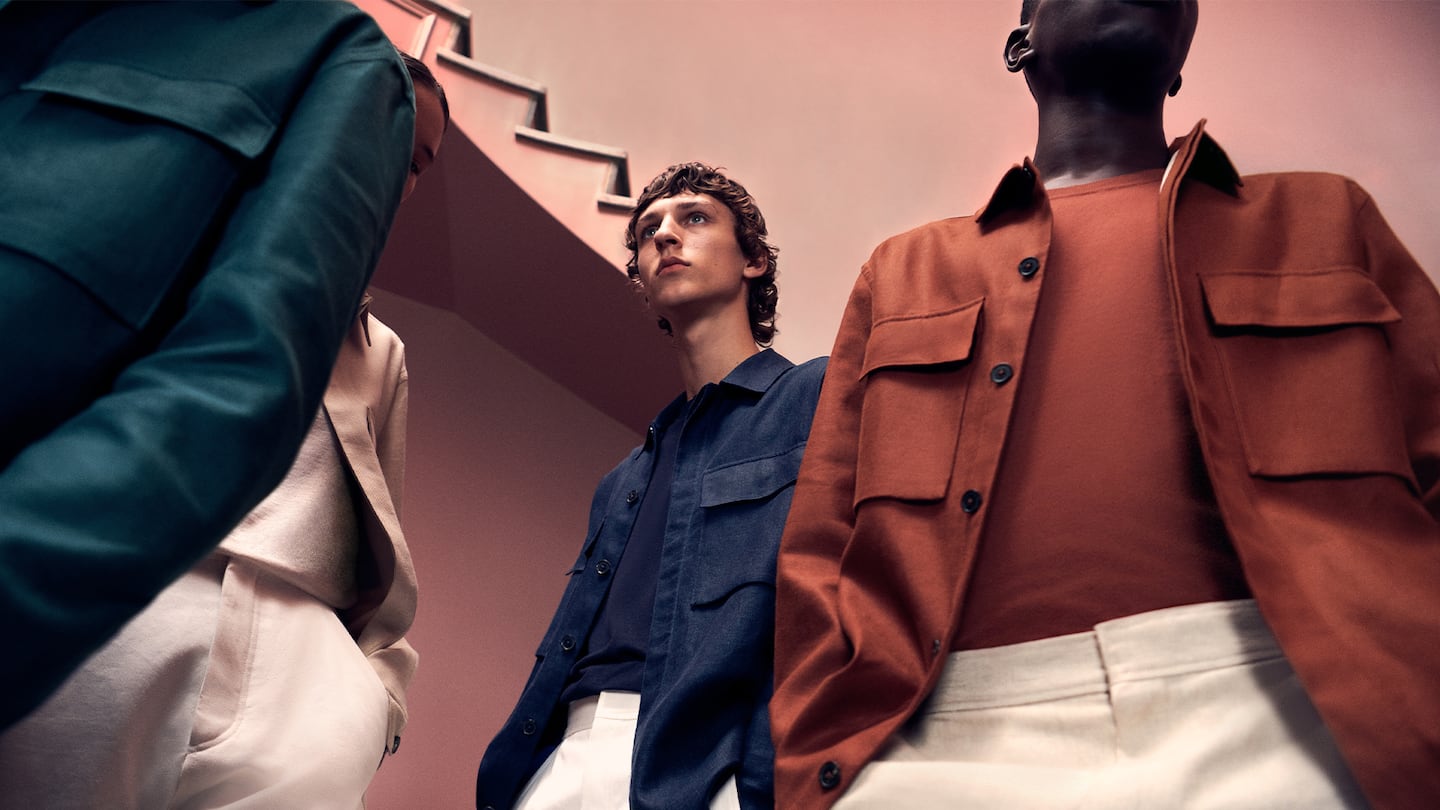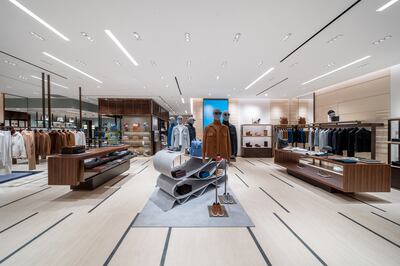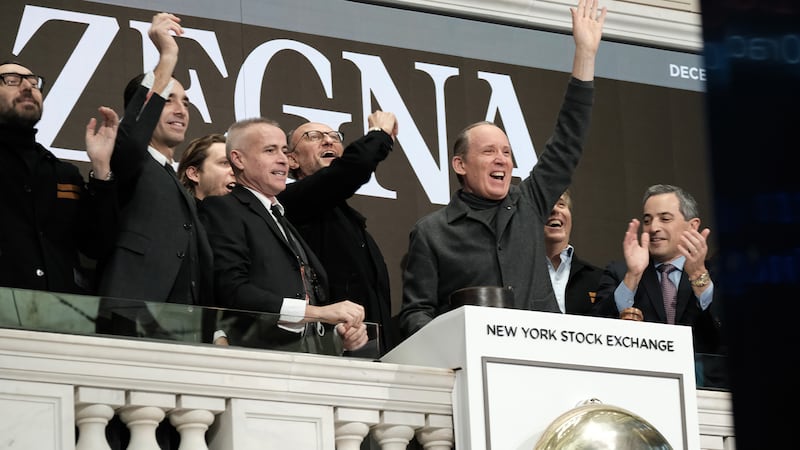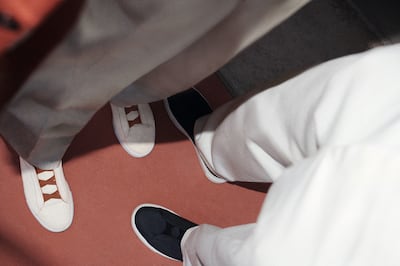
The Business of Fashion
Agenda-setting intelligence, analysis and advice for the global fashion community.

Agenda-setting intelligence, analysis and advice for the global fashion community.

As a 112-year-old tailoring empire, Zegna may not be the first place you’d look to see the future of menswear. But Gildo Zegna, the chief executive of his family’s brand for over two decades, is racing to secure the company’s place in a post-pandemic fashion market, where two years of work-from-home have prompted even the most conservative suit wearers to ask: “What should a man wear today?”
Last year, as Zegna prepared to list on the New York Stock Exchange and refocused its message on luxury leisurewear rather than suits, the company was able to exceed its targets for bouncing back from the pandemic. Sales in 2021 rose 27 percent to €1.29 billion ($1.4 billion), Zegna said in a statement after markets closed Wednesday. Adjusted operating profit grew sevenfold to €149 million, with an 11.5 percent margin surpassing the company’s 10 percent forecast.
“We have turned the brand around because of our strategy,” Zegna told BoF in an interview marking the company’s first annual results as a public company.
In the run up to its listing — carried out via a SPAC merger last December — the company accelerated its multi-pronged push to revamp its marketing, product assortment, supply chain and retail stores. The brand is betting it can defend its position in men’s wardrobes by making casual items the focus, reducing its historic trade in suits and suiting fabrics.
ADVERTISEMENT
Zegna has sought to create a sportier and more immersive menswear universe, adding new categories like sneakers and loungewear. Creative director Alessandro Sartori has continued to experiment with creating comfortable but elevated “uniforms”— featuring cozy overshirts and knit jackets — that have been gradually replacing two-piece suits in a stylistic shift that has accelerated since the pandemic.
Zegna’s casualisation push may have come late compared to most luxury players, but it’s been advancing at a clip: luxury leisurewear represented 50 percent of sales last year, Zegna said, compared to just 28 percent five years prior.

‘Hitting Lots of Notes’
While most rebranded products have yet to arrive in stores, a recent visit to the brand’s Paris flagship offered a glimpse of what’s to come: sneakers, polos, sunglasses and perfume were interspersed with racks of ready-to-wear apparel where deconstructed, workwear-inspired silhouettes took the lead. Most of the company’s traditional nested suits had been relegated to a corner upstairs.
It seemed Zegna’s angle on casualwear was to meet clients’ demand for more comfortable clothing without asking them to change who they are. Merchandising themes struck a balance between ones that would engage new customers, as well as others aimed at outfitting loyal suit buyers for the way they dress today.
Mao jackets and wide-legged trousers offered a more fashion-conscious silhouette, while windbreakers, chinos and cashmere baseball caps were spot-on for a client one might call “golf daddy”: a shopper who has matured to peak earnings (and spending potential) but whose days of suiting up are largely over. A slightly younger, crypto-wealthy “tech daddy” might find his fit too, in a lineup of slim-fit coloured jeans sold alongside matching hoodies.
“They’re hitting lots of different notes, and that’s helping them,” said Sam Lobban, senior vice president at Nordstrom. “There’s a customer who actually dresses in a classic golf club or tech executive way, but also a younger client who is emulating that, almost in an ironic way.”
Transformational Moves
ADVERTISEMENT
Big changes have been brewing at Zegna since 2018, when Gildo, a grandson of founder Ermenegildo Zegna, started to act on his “gut feeling of an entrepreneur” that slowing momentum in tailoring wasn’t just a short-term blip.
“We had to change the perception of the brand from a tailoring luxury brand to a lifestyle luxury brand,” Zegna said, or he felt “we’ll be in trouble.”
Zegna — whose ultra-classic positioning made it hardly seem like the sector’s most dynamic player — embarked on an acquisition spree that at first stunned the market.
After decades of Italy’s family-owned brands selling off to foreign owners, Zegna flipped the script, announcing a deal to acquire the innovative American tailoring brand Thom Browne for $500 million in August 2018. As big French groups like LVMH and Kering continued to eat up market share, “we felt scale was important,” Zegna said.
“Thom was in part of a market we couldn’t reach. It was in the womenswear world, and it had an edge factor. It was more fashion,” he added. Sales doubled within two years amid investments in retail and omnichannel services, and as Thom Browne started to leverage Zegna’s Italian tailoring supply chain.
Last year Thom Browne’s revenues rose 47 percent to €264 million ($287.6 million).
Zegna also embarked on a suite of acquisitions aimed at reinforcing and diversifying its vertically-integrated supply chain — a factor that had long set it apart from Italian rivals who rely almost completely on subcontractors. Zegna has operated its own fabric mill in Italy’s Piedmont region since 1910.
Zegna acquired a wool farm in Australia as it pushed a message of controlling its value chain from “sheep to shop.” Last year, it acquired a top-end cashmere supplier, Filati Biagioli Modesto, as part of a joint venture with Prada, as well as a controlling share in Tessitura Ubertino, a fabric-maker known for its jacquard and tweed creations.
ADVERTISEMENT
Those moves have allowed the brand greater agility as it branched into new, more casual categories, as well as positioning the company to respond to rising concerns on sustainability.
Zegna’s financial moves continued last year as the company went public in December by merging with a listed investment vehicle spearheaded by Andrea Bonomi, scion of an elite Milanese banking family, and former UBS CEO Sergio Ermotti.
In the run up to the merger, Zegna vaunted its supply chain investments and casualisation push, as well as announcing a plan to drop the less-catchy “Ermenegildo” moniker from its branding to market its products as simply “Zegna.” The brand moved to discontinue its more-accessible Z Zegna line and to fold the creations of Sartori’s “Couture XXX” runway shows into the main Zegna collection.
The company also stacked its board with advisors including former Vogue China editor Angelica Cheung and former Gucci CEO Domenico De Sole.

While the unified structure and punchier branding have yet to hit stores, investors have been willing to bet big on Zegna’s vision. Shares rose 9.8 percent to $11.31 per share on the first day of trading, boosting the market capitalisation to as high as $2.9 billion. As coronavirus variants, rising inflation and Russia’s invasion of Ukraine shook markets, the price of Zegna’s shares is down 2.5 percent year-to-date compared with a 13 percent drop for sector leader LVMH.
“The simplification of the Zegna brand into one brand — versus three previously — should be a catalyst to enhance engagement with new and existing customers on the business’ strong presence in luxury leisurewear, supported by a step up in marketing investment,” Deutsche Bank analyst Matt Garland said in a note to clients. He has a “Buy” rating on the stock.
Still Work to Do
With its Wall Street debut in the rear mirror, Zegna now needs to show it can keep delivering growth as well as landing the transition to its new aesthetic.
2021 sales remained slightly below 2019′s pre-pandemic levels — partly due to the move to wind down its Z Zegna sub-brand, but also as a result of continued reliance on formalwear and department stores: both categories and channels that bounced back more slowly from the pandemic. Wholesale still accounts for 34 percent of revenues, Zegna said.
This year, Zegna hopes to grow by a low-teens percentage as it rolls out refreshed collections — items with the new abbreviated branding start arriving in stores in May — as well as rolling out its new store concept to 200 more of its boutiques (70 locations have already been converted).

Zegna is able to leverage broad awareness in markets like the US, as well as a reputation for quality built up over decades in order to hold its own against more well-established players in casual fashion.
“Zegna is super well known and highly regarded for luxury fabrication of product over just being a brand name,” Lobban said. As such, Nordstrom’s customers have been “interested, curious and supportive” of Zegna’s transition, he said.
While Zegna’s revamp has helped it shift away from the shrinking category of suits, it has also put it in direct competition with another segment: the company is now going head-to-head against other logo-free, luxury lifestyle brands known for top-notch Italian production like Loro Piana and Brunello Cucinelli.
“If you ask me who are your competitors, it’s those two and they are very good. I admire what they do,” Zegna said. “But we are doing something different in that field, and the field is opening up. I’m not trying to take market share from Brunello Cucinelli and Loro Piana — I want to create it.”
After a year of luxury growth driven by the US, Zegna said demand for top-end leisurewear was currently surging in markets farther East. “In China, we’re in the beginning of a journey with that look,” Zegna said. “In Dubai, it’s the mecca of luxury, and they just want that look.”
A fresh take on classicism dominated the runways at Milan men’s fashion week, reports Angelo Flaccavento.
The Italian menswear company’s public filing, the latest in a slew of fashion IPOs in 2021, is just one piece of a larger plan to redefine the brand.

Robert Williams is Luxury Editor at the Business of Fashion. He is based in Paris and drives BoF’s coverage of the dynamic luxury fashion sector.
The Swiss watch sector’s slide appears to be more pronounced than the wider luxury slowdown, but industry insiders and analysts urge perspective.
The LVMH-linked firm is betting its $545 million stake in the Italian shoemaker will yield the double-digit returns private equity typically seeks.
The Coach owner’s results will provide another opportunity to stick up for its acquisition of rival Capri. And the Met Gala will do its best to ignore the TikTok ban and labour strife at Conde Nast.
The former CFDA president sat down with BoF founder and editor-in-chief Imran Amed to discuss his remarkable life and career and how big business has changed the fashion industry.